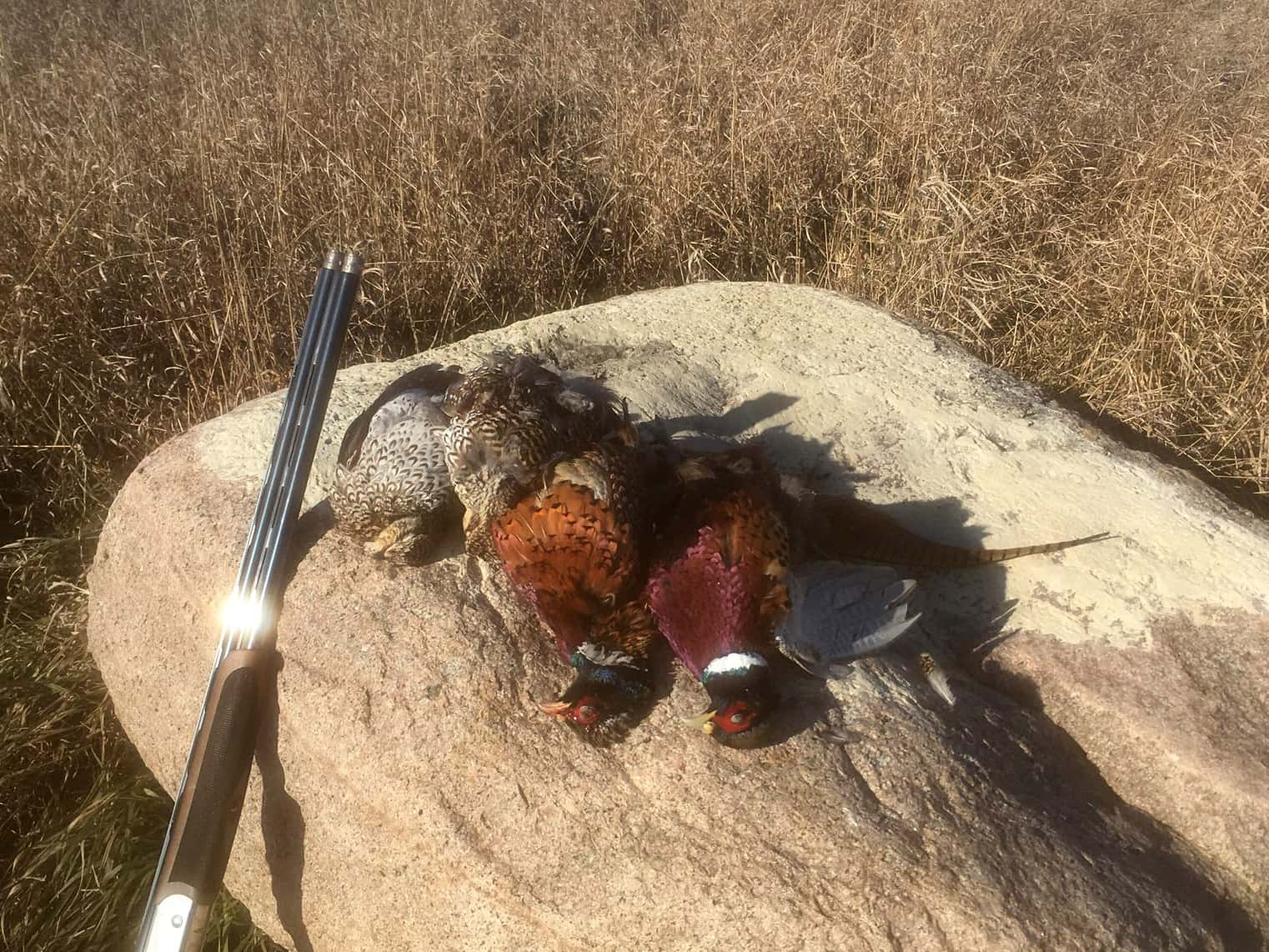
On High. The rise and fall of the uplands produced this great mixed bag of sharptailed grouse and rooster pheasants. Targeting sunny, south facing slopes and following the breeze along the windward sides can produce some exciting opportunities this time of year. Simonson Photo.
By: Nick Simonson
On the north side of the walk, my dog was birdy as soon as the northwest breeze curled around the middle of the hillside on which we walked and carried scent to his nose that didn’t stop until we reached the end of the grass.
We flushed singles and pairs of sharptailed grouse with regularity before the front half of the trek culminated in a mass exodus by a covey of 15 of the gray laughing birds taking off at a distance. Those scattered in the early stages allowed for multiple shots and put two in the bag by the time we made the turn.
As we doubled back toward the truck, we worked the sunny south-facing side of the hill and even with the wind streaming in behind us, my lab got hot on the trail of something running ahead. Pinned against the drop, a group of four rooster pheasants flushed off the southernmost point of the hill, and I doubled to cap the short walk with a colorful finish to our afternoon hill workout. The exciting end to the late season hunt reaffirmed some hillside strategies that have paid off in the past and continue to do so.
A general rule of thumb in the upland game book is that running birds generally don’t sprint their way up hills or over obstructions. Sure, this rule can be broken and cagey pheasants do it from time to time, but the natural incline of a hill, the break of a drain or the edge of a ravine serves as a boundary that birds can be pinned up against to force their rise and present a makeable shot, especially as late season conditions take hold across the region.
Similarly, the ups and downs of the rolling hills can also hold sharptailed grouse and targeting those windward sides of any rise on days with a sustained breeze can also help get hunters closer to these more wild-flushing birds in the late season. Done right and quietly, flushes can come even closer with these traditionally spooky birds when the wind covers up some field noise. When hunting for either species this time of year, targeting those places of good grassland habitat with frequent changes in elevation is key to success, and really pays off if there isn’t a lot of snow on the ground.
The slopes provide good loafing cover on days with moderate temperatures, and both grouse and pheasants will utilize south-facing hillsides to get out and stay warm with the direct sunlight. With some decent grass, they’re able to move about freely, or to hole up and absorb some rays and not have to expend a whole lot of energy to do it. Rises that come out of small drains with brush, cattails, reeds or other cover are must-walks this time of year for pheasants, as the deeper stuff serves as a nighttime residence and the hillside is a key travel area to warmer lounging areas.
Before heading out, check the wind and the sky cover and work the side of such a draw accordingly for roosters. An ideal scenario would be to walk the north slope (which is south-facing) on a sunny day with any winds that are blowing to the south. Those roosters caught in transition from the cover will likely try to scale the rise and then flush when the incline gets challenging or the dog makes better time on them, or a combination of both.
Sharptailed grouse may be found at the top of any rise as well, but don’t rule out the southern cusp of a draw either if those north winds are blowing, as they can see what’s coming from the other side and flushing out over the open area provides a quick escape route and lots of air to use in avoidance of predator and hunter pursuit. Double back on the opposite side and stay up high to catch any sharpies that are holding tight along the edge.
In areas where both birds are present, it’s possible to get an awesome mixed bag hunt out of the deal with a little extra effort and planning when working the inclines.
Great areas this time of year include Waterfowl Production Areas which often have that bottomland cover and steep sides around the pocket sloughs and potholes which are now frozen over, but still have thick shore cover like cattails making them attractive to pheasants, and the grassy hills which hold grouse.
A quick browse of a satellite map and a topographic option will help you identify those rises and falls, along with pinch points and other shifts in elevation which will help to raise the success level of any late season hunt in the uplands.

